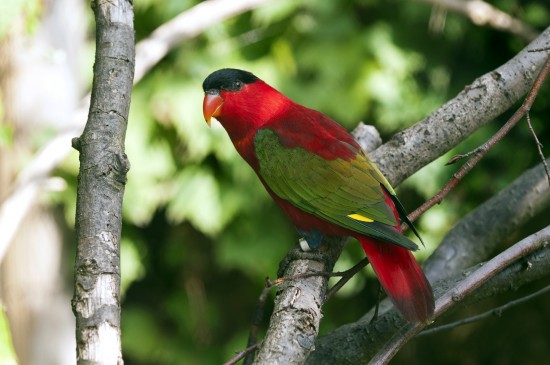
Horses, like all other mammals large and small, can fall victim to parasites. These creatures, defined as organisms that live in or on and feed off of another organism, can be found nearly anywhere and can enter your horse's body with no indication at all. There is virtually no way to be certain that your horse has not ingested parasites, but fortunately there are a number of ways to tell if she does have a parasite infestation.
To begin, it is important to know what the main parasites are that are likely to invade your horse.
Roundworms
Roundworms are also known as nematodes and this wide reaching phylum has over twenty-eight thousand distinct species. Horses are most likely to encounter the nematodes called ascarids. These little worms (actually quite large when compared to other roundworms) reside in the intestines.
There are several worries associated with these worms. Given a large enough infestation, your horse could end up with seriously compromised nutrition. These roundworms will essentially eat the mostly digested food that comes past them in the intestines. If your horse is no longer receiving the food she needs, she may become weak and lethargic, eventually dying if left without care.
It is also possible that a large infestation will block the intestines all together. You may notice your horse has become colicky and is experiencing a lot of pain.
The larvae of these worms can enter the arteries and make their way to the lungs and liver where they might inflict serious harm.
Strongyloids
Also called thread worms, these nematodes are much smaller than ascarids, usually reaching no longer than two millimeters. While it is far less likely that these worms will cause an intestinal blockage, they are certainly dangerous.
These worms are rarely ingested, and usually enter the body by cutting their way through the skin, often while an animal is lying down. Once in the bloodstream, they will usually move throughout the body until lodging in the small intestine. Occasionally, threadworms will leave the bloodstream in the lungs where they might be eventually coughed up. Once in the throat or mouth, they are then swallowed, thus allowing access to the small intestine.
The damage these worms can cause is significant, as they are fond of traveling throughout the body. In the lungs they will cause symptoms not unlike pneumonia, which makes a diagnosis very difficult. In the end, it is only with fecal testing that their presence will be detected.
Botflies
A botfly, unlike the other parasites mentioned, is actually an arthropod. It is a winged fly and its status as a parasite is derived from the fact that its eggs are ingested and hatch within the body of another animal.
If you believe there are botflies in the area (usually at the end of summer or the beginning of fall), make sure you check your horse's hair for small yellow dots. These could be botfly eggs. Carefully scraping them off is the only way to remove them, and if left on the hair, they will eventually burrow down into the skin. These eggs may also become ingested if a horse rubs its face near where the eggs have been laid.
Prevention
Preventing your horse from contracting parasites is notoriously difficult. Because most parasites are passed in fecal matter, it is essential to keep the area where a horse may be, especially where feeding and watering may happen, clean of feces.
If you suspect that your horse may have worms or other parasites, or if you have noticed worms in the feces of your horse, it's a good idea to contact your veterinarian about getting some horse dewormer.
There are about 75 million horses in the world today with more than 350 different breeds of ponies and horses. To learn more about the modern horse health and training, & horse supplies, follow the links to vist us at PetCustomer.com.
 The Language Of Paws - How Dogs Use Their Paws To Communicate
The Language Of P
The Language Of Paws - How Dogs Use Their Paws To Communicate
The Language Of P
 Buy Your Own Chicken Houses – Eat Organic Eggs Everyday
Buy Your Own Chicken Houses – Eat Organic Eggs Everyday
Buy Your Own Chicken Houses – Eat Organic Eggs Everyday
Buy Your Own Chicken Houses – Eat Organic Eggs Everyday
 Maltese Dog Hereditary Health And Health Testing
Maltese Dog Hered
Maltese Dog Hereditary Health And Health Testing
Maltese Dog Hered
 Purple-naped Lory
Purple-naped Lory
Purple-naped Lory
Purple-naped Lory
 How Should Pets Be Handled To Enhance Health?
How Should Pets Be Handled To Enhance Health?
How Should Pets Be Handled To Enhance Health?
How Should Pets Be Handled To Enhance Health?
Copyright © 2005-2016 Pet Information All Rights Reserved
Contact us: www162date@outlook.com